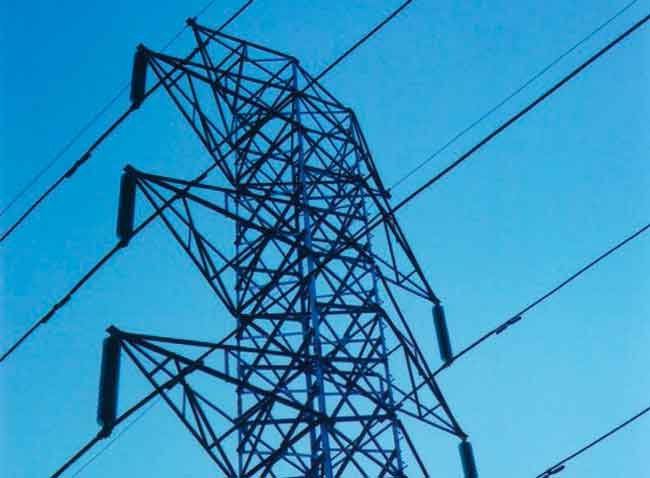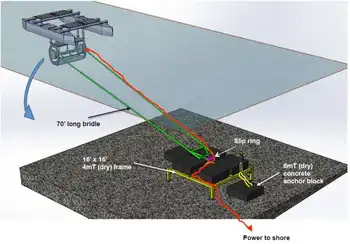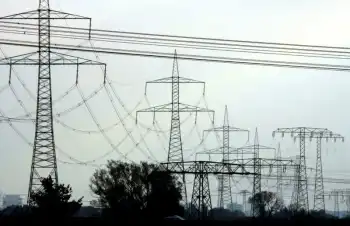Major bioenergy projects slated for B.C.
NORTHERN BRITISH COLUMBIA - Bioenergy projects in northern British Columbia, which could run into hundreds of millions of dollars, have made BC Hydro's green-energy shortlist.
The projects, if approved and built, would constitute the first significant bioenergy production in northern B.C. since Premier Gordon Campbell launched a bioenergy strategy in Prince George three years ago.
The energy production was meant to be fuelled, in part, by the vast deteriorating pine beetle-killed forests in north and central B.C.
The five northern B.C. projects that made the short list include a project at Canfor Pulp's Northwood mill, two projects at West Fraser sawmills and two projects by Western Bioenergy.
The estimated cost of the Northwood project alone, which contemplates a stand-alone boiler and turbo-generator that would be fired with wood residuals, is $150 million.
The cost of one of the Western Bioenergy projects is cited as $135 million.
Canfor Pulp vice-president of operations Brett Robinson said they are nowhere near a deal, as they are still in detailed discussions with BC Hydro on whether the project makes sense.
"It's early in the dance," he said.
BC Hydro doesn't expect to make a decision until April. The eight projects constitute more than 1,600 gigawatt hours of annual production, so not all of the projects are expected to be approved. BC Hydro has set a target of 1,000 gigawatt hours, enough electricity to power about 90,000 homes each year.
Canfor Pulp is already in the midst of $160 million in capital projects — $122 million of that received from a federal subsidy program — to reduce pollution and improve energy efficiency at its three pulp mills in Prince George, which employ about 1,100 people. The bulk of that money will be spent at Northwood later in the year.
Those projects, however, have nothing to do with the project submitted to BC Hydro in the bioenergy call, said Robinson.
West Fraser has also submitted plans to produce energy at its sawmills in Chetwynd, north of Prince George, and Fraser Lake, east of the city.
West Fraser president and CEO Hank Ketchum mentioned the two proposed bioenergy projects recently during a conference call to discuss the company's year-end $166-million profit. "This is an exciting time for our company and our industry," he said.
Western Bioenergy Inc. has two projects on its list: the Ditni Yoh Green Energy in Burns Lake and Fort Green Energy in Fort St. James.
Details of those projects are unclear, although it has been reported Ditni Yoh Green Energy is a joint venture with First Nations in the Burns Lake area with a price tag of $135 million.
There are also projects in Merritt, Grand Forks and Campbell River.
The projects will be assessed on criteria that includes cost, biomass supply, experience, First Nations consultation, and development and delivery risk, said BC Hydro official Martin Kincade.
This is the second bioenergy call for proposals for BC Hydro.
Under the first phase, two projects were approved in northern B.C., both in Prince George.
One was a modest energy project at Canfor Pulp, which was completed. The other, PG Interior Waste to Energy's $50-million project, has not been able to get off the ground. The project, slated for the BCR, was also meant to produce power, charcoal and bio-oil from logging debris, which is normally burned in slash piles on logging blocks.
Related News

TTC Bans Lithium-Ion-Powered E-Bikes and Scooters During Winter Months for Safety
TORONTO - The Toronto Transit Commission (TTC) Board recently voted to implement a ban on lithium-ion-powered electric bikes (e-bikes) and electric scooters during the winter months, a decision that reflects growing safety concerns. This new policy has generated significant debate within the city, particularly regarding the role of these transportation modes in the lives of Torontonians, and the potential risks posed by the technology during cold weather.
A Growing Safety Concern
The move to ban lithium-ion-powered e-bikes and scooters from TTC services during the winter months stems from increasing safety concerns related to battery fires. Lithium-ion batteries, commonly used in…




